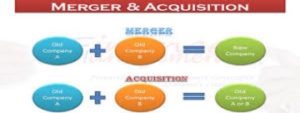So you think you know about merger arbitrage?
Can you locate ALL the inputs and calculate the value of a merger arbitrage spread whilst avoiding to the Top 10 Biggest Merger Arbitrage Myths?
Merger arbitrage CAN be a reasonably straightforward alternative event driven investment strategy and provide many profitable opportunities. But, there are already a large number of players in the crowded risk arbitrage field. This encourages the creation of numerous information sources covering education, research and trading. This typically leads to endless vague discussions and a lack of useful conclusions and ultimately the Top 10 Biggest Merger Arbitrage Myths.
Unfortunately, articles are not always written by respected professionals and a number of myths appear on the internet waiting to entrap the unsuspecting trader. Merger Arbitrage Limited is dedicated to the eradication of these untruths. On your behalf, the humble arbitrageur, we’ve scoured the web and consumed detailed content from some “respectable” sources for errors and inconsistencies. Read on to learn the how’s, why’s and why not’s of the top 10 biggest merger arbitrage myths.
Top 10 Biggest Merger Arbitrage Myths
1) NOT all Merger Arbitrage is created equal
It’s extremely important to point out the differences in deal structures within the merger arbitrage space. Too often, merger arbitrage is referred to as a homogenous product. Like some fungible asset to be transported across portfolios as deemed necessary. There are in fact two main deal payment structures. Stock for stock deals (sometimes including a cash portion as well) and all cash deals (which themselves may be structured as a tender offer). (Contingent Value Rights or Warrants may also be occasionally used but we’ll leave them aside for now).
These deal types typically have different spread levels, different financial risks and different closing time frames In fact, they are almost two different strategies. The arbitrageur has to undertake additional actions in the spread calculation and execution of a stock swap deal. This requires shorting the acquirer stock by the correct exchange ratio. This may involve the use of additional capital to cover the short position. Therefore having a dampening effect on the return of the investment against the capital employed. This in turn may cause the observed deal spread to be wider than theoretically calculated. Traders and investors will seek a larger return in lieu of the increased capital requirement for entering a position. From the arbitrageur’s point of view, the analysis of risk and return needs to assessed differently for each deal type and cannot be done at the top level alone.
2) Merger Arbitrage is NOT risk free
There’s a popular personal finance website that claims merger arbitrage is “risk free”. In short, NO, it’s NOT. Neither is it risk free, nor “risk-free”. This is a surprisingly popular error that appears to stem from there being limited directional market exposure in certain deal structures. There are ways one can limit this directional risk in a stock for stock deal. But a deal break of any structure type for either macro or deal specific reasons often causes catastrophic losses to a portfolio.
Effective risk management practices such as being aware of the floor price can limit this effect when enforced correctly but the losses will not be completely eliminated. Another risk which can seriously reduce returns on an annualized basis is Deal extension risk. This is where capital is tied up for longer than originally forecast.
3) Merger Arbitrage is NOT (necessarily) a low risk strategy
Another favorite of the Top 10 Biggest Merger Arbitrage Myths is many people claiming merger arbitrage is a low risk strategy. Often, they are investing in deals which have characteristics of a historically high probability of closing. There are some event driven funds that focus exclusively on these deal characteristics and give the appearance of merger arbitrage being a low risk strategy.
However, there are a number of deals in certain sectors where the spreads remain wide and for good reason. High regulatory compliance from protected industries such as banking, telecommunications (FCC) & power generation (FERC) to name but a few. Clearance that is required under HSR and possibly CFIUS clearance can also add additional risk. Whilst it is the choice of the arbitrageur whether or not to invest in these deals they are part of the wider portfolio of options with a heightened level of deal break risk.
4) Merger Arbitrage is NOT (necessarily) a high risk strategy
In contrast to myth #3, there are examples of deals where the deal closing probability (DCP) is higher. Key factors to look for are
These deals form a tiny subset of the merger arbitrage space and are not representative of the wider strategy. Accordingly, these deals generally trade with extremely tight spreads for most of the deal completion timeline. This means significant returns are difficult to achieve. Some spreads may even trade above the offer price in the hope of a competing offer or bidding war.
5) Merger Arbitrage returns ARE connected to interest rates
Imagine this. A deal will close at the offer price of $100 a share in exactly 1 year from now. Interest rates are at 10%, the deal is 100% certain to close and there are no dividends. Where approximately would you expect the stock price of the target company to currently be trading?
a) $100.00
b) $90.00
c) $110.00
d) $90.91
*Answer at the bottom of the page[1].
Interest rates are built into all financial models and you will need to take account of them here also. But do people do that when calculating the spread returns? How many models have you seen with this included? How can you compare historical returns during times of fluctuating interest rates accurately if you are not taking into account the effect of interest rates? We are not suggesting this will completely address the decline of merger arbitrage returns during the last 20 years. It may however go some way to explain part of that decline. See our article Merger Arbitrage and Interest Rates – A Guide to Enhancing Profitability for a comprehensive explanation.
6) Merger Arbitrage ETF’s are NOT representative of a pure Merger Arbitrage strategy
There are only 2 Merger Arbitrage ETF’s, IQ Merger Arbitrage ETF (MNA) and IQ Merger Arbitrage ETF (MRGR). We have dealt with these in a standalone article discussing their relative merits and drawbacks. In brief, MNA does not short the acquirer stock in a stock-for-stock merger. Instead, it shorts various global equity products to hedge broader market risk. According to the MNA prospectus, this is a“differentiated approach … with the goal of generating returns that are representative of global merger arbitrage activity”.This is despite the fund usually having at least 75% of its assets invested in US targets. In volatile markets will these short positons offer sufficient protection? Why not just short the acquirer stock in the correct proportion? MRGR is more representative of the traditional merger arbitrage strategy but does not trade sufficient volume thus suffering from liquidity issues. More importantly, returns have struggled to replicate broader merger arbitrage performance metrics over the past 5 years. The problem is that there are no hard and fast rules for constructing a merger arbitrage portfolio. Individual choices may produce significantly different returns to the competition whilst all positing a valid investment hypothesis.
7) Merger Arbitrage DOES have market risk in “normal” market environments
8) Merger Arbitrage has EXTENSIVE risk in extreme market environments
As always, risk becomes more prominent in certain environments. And yes, you’ve guessed it, market panics. Buyer’s remorse, (or winners curse) enters the mind of the acquirer and the fear of overpayment can lead to irrational actions. The sub-prime crisis will forever provide a stunning example of this. A credit crunch inevitably leads to a contraction of capital and funding for deal making dries up. More recently, the COVID-19 pandemic has caused a number of deals to be abandoned such as the hostile bid for HP (HPQ) by Xerox (XRX).
Parties renege on prior commitments and point the figure of blame at everyone but themselves. There is a desperate search for MAC clauses or contractual loopholes to locate an exit from the deal. The question then becomes how quickly does the market understand the extent of these new market environment risks? And how quickly and accurately can it respond? A heightened risk environment for deal making should be accompanied by wider deal spreads as the possibility of deal failure rises. Higher risk, but with higher return.

Get the latest updates from Merger Arbitrage Limited
Join our mailing list to receive the latest news and updates from our team.
You have Successfully Subscribed!
9) Merger Arbitrage returns are NOT like shorting index options
There are merger arbitrage P&L properties than can fool an investor into thinking these returns are similar to trading options. In this case, shorting premium. Here, the investor hopes to collect the premium from selling the option. This happens if the option expires worthless and not having to pay out should the stock move violently against them. This is akin to collecting a small amount of merger arbitrage spread premium and hoping that the deal does not fail and lead to a large loss. This is indeed similar to shorting a put option. Hoping that at the time of option expiration the stock is equal to or above the strike price.
But what about profiting from any upside? One bonus source of increased profit for the arbitrageur is a higher bid for the target. In fact, a bidding war with a fellow suitor is as close to a dream scenario as possible for most arbitrageurs. Short put premium does not contain this P&L possibility. The maximum gain is limited to the value of the option premium sold. To benefit from any upside in a similar way you would also need to be long a call option. Which, the option traders amongst you may have already noticed is called a reversal! ie synthetic long stock position. For a more extensive review of using derivatives in merger arbitrage see our article How to use Options in a Merger Arbitrage Strategy.
10) Risk return analysis of Merger Arbitrage in different countries is INCOMPARABLE
The final entry in our Top 10 Biggest Merger Arbitrage Myths is how rules and regulations can differ from one jurisdiction to the next to such an extent it is almost impossible to make reasonable comparisons. Even with sufficient transparency in the regulatory process and a consistent application through time free from political interference, this comparison would remain a challenge. The UK’s Competition and Markets Authority (CMA) traditionally takes a pro takeover stance with companies. By adhering to the “City Code” target companies are limited in their defense options compared to their American counterparts. For example, there is no poison pill or equivalent defense allowed. EU states have reasonably homogenous regulations.
Companies can find additional sources of protection on nationalist grounds or from the involvement of additional stakeholders. The United States falls somewhere between these two entities. These factors compound the difficulty in making comparisons between spread levels, completion times and completion rates. Anomalies can be highlighted in historical performances but as mentioned, this requires consistency of application by the governing authorities.
Conclusion
So there we have it. The top 10 Biggest Merger Arbitrage Myths – BUSTED! All with the aim of making your arbitrage trading more informed and hopefully more profitable. We spent quite some time preparing this list, so if you’ve enjoyed it, why not share via your preferred platform using the links on the left. Feel free to read our How to Profit from Merger Arbitrage to help you get started in trading risk arbitrage. We’ll be releasing the stand alone articles related to some of these points in the near future.
[1] If you didn’t select d) then lie and don’t tell your boss.
Finding this information useful? Here's what you can do to help...
- Share this page using the toolbar links at the left of your screen or at the bottom for mobile users on your preferred social network
- Sina Weibo
- Twitter etc.
- Follow us on twitter @MergeArbLimited.
- Become friends with us on Facebook
- Register for news alerts and merger arbitrage deal analysis postings via email using the sign up form.
- In addition to these, an RSS feed is also available at the bottom right of the page.
- Contact us using the details given on the Contact Us page.
- Donate using the paypal widget in the sidebar. It’s gladly appreciated and we need the coffee! See the Paypal section for additional incentives
- Share this page using the toolbar links at the left of your screen or at the bottom for mobile users on your preferred social network
Thanks for reading!







